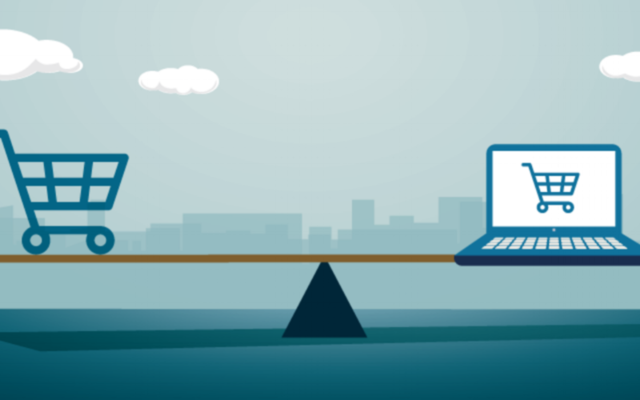For what feels like many years now, we’ve all been bracing for the impending collapse of brick-and-mortar retail — and it hasn’t happened yet. Instead, what we’re seeing is a proliferation of technology that’s helping retail stores stay relevant and compete realistically with bigger e-commerce companies.
Which technologies make the most sense for your retail presence? Ask yourself what it is about the online shopping experience that you’re trying to emulate. If you’ve read the writing on the wall and you’re worried about remaining competitive, you know it requires three things above all:
- Convenience for customers and a premium experience
- Items actually in stock to look at and touch, with additional inventory close at hand
- An array of payment options available for a fluid transaction
Meeting each of these needs means becoming more competitive with your e-commerce rivals. If you do it right, you might even wind up with the upper hand.
Digital Platforms Elevate the in-Store Experience
In a couple of ways, physical retail stores will always have an inherent advantage over online retailers. When you drive to a store, for example, you get to touch the merchandise and in some cases try it out. Appreciating the quality, fit and finish of an appliance or piece of clothing is an experience online retailers cannot match.
However, it’s possible to blend technology with this tactile experience, as several high-end retailers are discovering. Stores like Nordstroms and Reformation are experimenting with digital platforms to combine e-commerce and brick-and-mortar experiences in new and deluxe ways. By checking in online beforehand, customers can indicate in advance which items they’d like to try on, and then have them already waiting in a clean, prepared fitting room when they arrive.
This is a big deal for retailers as well, who can use digital tools like these to solve a particular pain point: the frustration of losing a sale when a customer wants to see a specific make, model, style, fit, cut or color in advance — but that variant is not available. You can “lean” your storefronts by carrying a smaller selection that represents each style you offer, and then pull from inventory or ship right to customers’ homes when they decide they like their selection and the time comes to close the sale. Customers don’t have to take home a floor model, and you don’t have to ship product before it’s needed.
Smartphones and Mobile Payments Make POS a Breeze
Even at a time when it feels like we’ve collectively grown bored with our mobiles, the humble smartphone is not going away anytime soon. Enterprising developers keep finding new ways to keep our iPhones and Androids relevant in the shopping experience.
That includes in brick-and-mortar stores, where smartphones provide a way for customers to make mobile payments. However, it’s important to ensure POS hardware and software have that functionality. Square, PayPal, Apple Pay, Google Pay and others are helping remove the middlemen and trust mechanisms from the transaction process, but it means retailers have to know how to choose point-of-sale equipment that is as platform-agnostic as possible when it comes to facilitating payments.
In-Store Beacons, Location Services and Asset Tracking
Stores large and small can benefit from deploying location-based beacons throughout shop interiors. Beacons use Bluetooth or a similar protocol to engage in geography-based targeting. The idea is that a customer could navigate around your store and receive directions right on their smartphone for locating items. Beacons provide your brick-and-mortar environment with a greater awareness of who’s in the store, where they’re headed, and what they’re looking for.
The concept easily applies to the organization and management of employees, as well. Some hospitality chains are experimenting with beacons to better track customer-staff interactions. For stores and shops, this could help managers ensure employees are stationed wherever customer interest is thickest at that moment.
RFID, like Bluetooth, provides a way for retail managers to track their important assets. Like the barcode before it, RFID technology is vital in inventory management, except it can reduce tedious hand-scanning processes in a lot of cases. In turn, this cuts down on errors. If your inventory says you have an item on hand for a customer, and it is based on RFID batch scanning instead of piecemeal scanning, it probably means you do.
Data Analytics for Multichannel Selling and Inventory Management
Big data analytics isn’t just for major companies anymore. You’ll find all kinds of vendors promising insightful and even intelligent software for small businesses. It’s important to understand what problem you intend to solve before you invest in a solution. So what can analytics bring to the brick-and-mortar shopping experience? Think about what you could do differently with tools like:
- Daily, quarterly and even real-time data on periods of highest foot and web traffic, for more proactive staff management.
- More intelligent marketing based on customer visits, clicks and previous shopping patterns.
- More proactive inventory management in multichannel sales environments thanks to predictive algorithms and closer digital integrations with vendors. When sales can happen online, in-store or at branches in nearby cities, it’s vital to have a unified and intelligent inventory management system.
Achieving this kind of omnipresent and cohesive awareness of your business processes, customer insights and inventory data means putting the cloud to work. Thankfully, software-as-a-service makes these kinds of tools affordable for retailers without an in-house IT team.
A brick-and-mortar store that takes cues like these from bigger, online retail giants can easily punch above their weight when it comes to competing effectively.
Article by channel:
Everything you need to know about Digital Transformation
The best articles, news and events direct to your inbox







